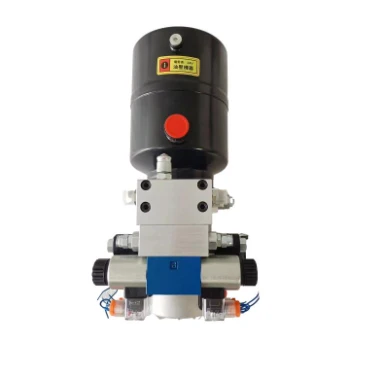Oct . 18, 2024 11:00 Back to list
Analysis of Cross-Sectional Design for Hydraulic Cylinder Products and Applications
Cross-Sectional Analysis of Hydraulic Cylinder Products
Hydraulic cylinders are crucial components in various machinery and applications, conveying mechanical force through the controlled movement of pressurized fluid. Understanding the cross-sectional design of hydraulic cylinder products is essential for optimizing their performance, durability, and efficiency. This article explores the significance of cross-sectional analysis, the various shapes commonly used, and how these shapes influence the functionality and performance of hydraulic cylinders.
The cross-section of a hydraulic cylinder primarily determines its strength, weight, and operational efficiency. The most common shapes are circular and rectangular, but designs may also incorporate more complex geometries to meet specific performance requirements. Circular cross-sections are overwhelmingly preferred due to their structural integrity and better stress distribution under pressure. The even distribution of stress around the circumference of a circular cylinder allows it to withstand higher internal pressures without risking failure, making it an ideal choice for high-performance hydraulic systems.
In addition to shape, the materials used in hydraulic cylinders also play a crucial role in cross-sectional performance. Common materials for hydraulic cylinders include carbon steel, stainless steel, and aluminum, each with differing mechanical properties. For instance, carbon steel offers excellent tensile strength and ductility, making it suitable for high-load applications. Conversely, aluminum, while lighter, may be preferred in applications where weight savings are essential, such as in mobile machinery or robotics.
hydraulic cylinder products' cross-sectional analysis.

Another critical aspect of cross-sectional analysis is the size of the cylinder. The diameter of the cylinder directly impacts the amount of force that can be generated. According to Pascal's law, the pressure applied in a confined fluid is transmitted undiminished in every direction. Therefore, a larger cross-sectional area results in greater force output. However, larger cylinders also entail heavier weights and may require more substantial supporting structures, which can affect overall equipment design.
Seals and joint designs within the cross-section are also paramount in ensuring hydraulic efficiency. The interplay between the cylinder's cross-section and its sealing elements is vital to prevent leaks and ensure smooth operation. Poorly designed seals can lead to hydraulic fluid leakage, reducing efficiency and increasing operational costs. Engineers must conduct thorough cross-sectional analysis to identify optimal seal designs that can maintain integrity under varying pressures and temperatures.
Cross-sectional analysis also extends to understanding the impact of features like grooves, indentations, and ports within the cylinder. These elements can significantly affect fluid flow and pressure regulation. For example, the design of ports determines how fluid enters and exits the cylinder, influencing the speed and responsiveness of the hydraulic actuation. Additionally, grooved or patterned cross-sections can be beneficial in minimizing friction and wear, thus extending the cylinder's life span.
In summary, the cross-sectional analysis of hydraulic cylinder products encompasses a wide range of considerations that impact performance, durability, and operational efficiency. From the fundamental shapes and materials to the intricacies of seal designs and fluid dynamics, each aspect plays a critical role in developing effective hydraulic systems. As industries continue to innovate and push the boundaries of hydraulic technology, a thorough understanding of cross-sectional design will remain essential for engineers and manufacturers alike, ensuring that hydraulic cylinders can meet the increasing demands of modern applications.
-
Fork Lift Power Units - Hebei Shenghan | Efficiency, Reliability
NewsJul.13,2025
-
1.5-Ton Turbocharged Cylinder-Hebei Shenghan|Hydraulic Solution,Energy Efficiency
NewsJul.13,2025
-
Auto Hoist Power Units-Hebei Shenghan|Efficiency&Industrial Lifting
NewsJul.13,2025
-
Double Acting Power Units-Hebei Shenghan|Hydraulic Solutions,Industrial Efficiency
NewsJul.13,2025
-
1.5 Ton Lifting Cylinder 70/82-40-290-535 - High-Performance Hydraulic Solution | Hebei Shenghan
NewsJul.13,2025
-
Fork Lift Power Units - Hebei Shenghan | Efficiency&Reliability
NewsJul.13,2025
